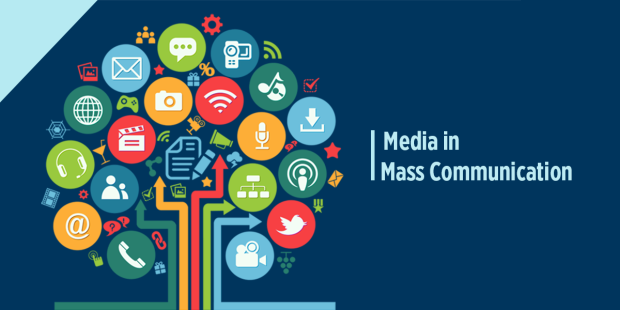Media of Mass Communication in this era, Now let us turn to how various forms of media have been used for the purposes of mass communication. Mass media have traditionally been divided into two basic types: print and electronic (or broadcast). Print media (i.e., newspapers and magazines), of course, disseminate information through the production and distribution of paper copies. In contrast to electronic media, print media tend to be more permanent, or at least they were before the advent of widespread video and audio recording. Print media also require literacy of the audience. There are no bandwidth limits in print media, whereas there has traditionally been a finite number of possible radio frequencies and television channels (though today, due to technological advances, these are rapidly increasing in number). There is no inherent limit to the number of newspapers or magazines that may be published. In general, print media lend themselves better to a more detailed treatment of most topics than do electronic media.
In contrast to print media, electronic media are technologically more recent, less permanent, and less dependent on formal literacy or accessibility of urban infrastructure. This last point becomes especially crucial in more isolated regions of the world. For example, one can use a portable radio without having any access to electricity, literacy, or urban life. Likewise, many developing countries rely on mobile phones for Internet access, although highspeed Internet remains elusive for many in rural areas, even within the U.S. Because of their limited channel capacity, radio and television are typically more tightly regulated by governments than are print media, for example in the assignment of television channels and radio frequencies. The more authoritarian the society, the easier it is for the government to control radio and (especially) television in times that are deemed to be threatening. Although television networks, both private and government owned, tend to be national in scope, they often have influence far beyond their country’s borders.
This traditional print–broadcast distinction, while still useful, has become somewhat antiquated with the advent of computer-mediated communications (CMC). Although electronic in technology, CMC has permanence and effectively unlimited channel capacity, and in this way is more like print media. Computer technology offers opportunities for combining media in ways that never used to be possible. For example, YouTube archives video footage from anyone who cares to post something. Wikipedia offers an encyclopedia available for all to read and edit. Facebook and Twitter offer opportunities to post pictures, notes, or party invitations, and send messages to several hundred possible “friends.” Anyone can start a blog and post for others to read. In addition, print media are increasingly crossing the line to become electronic media, in that many publications produce electronic versions of their printed content.Given that we are studying the psychology of mass communication, let us now turn to look briefly at how we use the various media.
